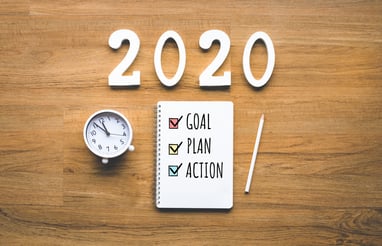We all have places we get stuck, and January tends to be a time when we reassess what’s not working for us anymore. Mostly we are looking for ways to be better, healthier versions of ourselves. The trouble with trying to figure out how to get unstuck is that we limit our thinking. In fact, there are eight different areas that have been identified as contributors to overall wellness:
 Emotional
Emotional- Spiritual
- Intellectual
- Physical
- Environmental
- Financial
- Occupational
- Social
There are countless possibilities for satisfying resolutions.
Look for Inspiration
In the past, I limited my resolutions to what I “should” be doing, such as weight loss and getting to the gym; or what I “shouldn’t” be doing, such as drinking wine during the week or eating bread and sweets. Last year I decided to take an entirely different approach. I took a look at where I was feeling poor—emotionally, spiritually, physically, and socially.
Then I began looking for inspiration. I thought back to conversations that lingered in my head, to social media posts that gave me pause, to pictures in magazines that I had saved, and to impromptu experiences that made me happy. I listened for the voice inside that said, “Isn’t that different? Isn’t that interesting? More of that, please.” I understood that this was where my body was asking me to resolve something; that my inner voice was letting me know that there was an opportunity to integrate something that would provide extraordinary satisfaction. It was time to think outside just the physical wellness box.
A Creative Way to Improve Well-being on Many Levels
I remembered reading a social media post about a man who set out to visit all of his Facebook “friends.” He decided that he wanted to put the personal aspect back into friendship. A little bell rang inside my head. I too was feeling disconnected emotionally from many of the people I was connected to on social media.
With a milestone birthday approaching, I was reminded of a person I used to train who decided to try something new every month for her 50th birthday year. I had become an empty nester and was feeling that my “almighty calendar” was empty. I liked the idea of a monthly goal—of looking forward to going somewhere each month.
During the December holiday celebrations, I wore a shawl that I had crocheted for myself from a simple pattern and inexpensive yarn. Almost every woman stopped to admire my work. This pattern that I had learned was satisfying and helped hone my (self-taught) crocheting skills.
Next, an idea formed inside my head. I decided to run a half-marathon every month with the following stipulation: I had to ask/find a friend to run with me (or simply cheer me on!). As a surprise thank you to any person who signed on, I presented them with a homemade shawl stitched together by my hands and filled with gratitude.
Guess what? I have never had a more satisfying year in my life. I added time with family and friends. I added adventures in new places. And I expressed gratitude. Sure, I was also able to check off the physical wellness goal too, but my year was about so much more.
Let me share an example of my March half-marathon experience. One race morphed into a weekend in Philadelphia with my nephew, his mother, sister, aunt, cousin, and stepmother, and my sister-in-law and husband. The weekend was filled with laughter, food, running, and love. It kept my hands busy; I made six shawls to show my appreciation for the connections we made.
Challenge Yourself to Look at All the Wellness Dimensions
So ask yourself, “Where am I hurting?”, “Where do I want to add more significance to my life?”, and “Where can I develop more of myself?” I challenge you to look at all the wellness dimensions and creatively piece together a New Year’s resolution that changes your world in a way that is deeply meaningful and satisfying. Here’s a cheat sheet on the dimensions of wellness that you can use to get started.


 I was looking for fitness challenge. I had already been running 5k races and had either won or placed in every race (6) within my age group, so I felt like I was ready for more. My mother suggested I race a half-marathon. Truly, running 13.1 miles sounded awful and I had no desire to run that far for pure enjoyment. Suddenly, I found myself logging longer runs on the weekends just to test my endurance. When early registration came for the
I was looking for fitness challenge. I had already been running 5k races and had either won or placed in every race (6) within my age group, so I felt like I was ready for more. My mother suggested I race a half-marathon. Truly, running 13.1 miles sounded awful and I had no desire to run that far for pure enjoyment. Suddenly, I found myself logging longer runs on the weekends just to test my endurance. When early registration came for the